- Home »
- Learningcenter »
- Roof type curb appeal
[Guide] Which Roof Type is Best for Improving Your Curb Appeal?
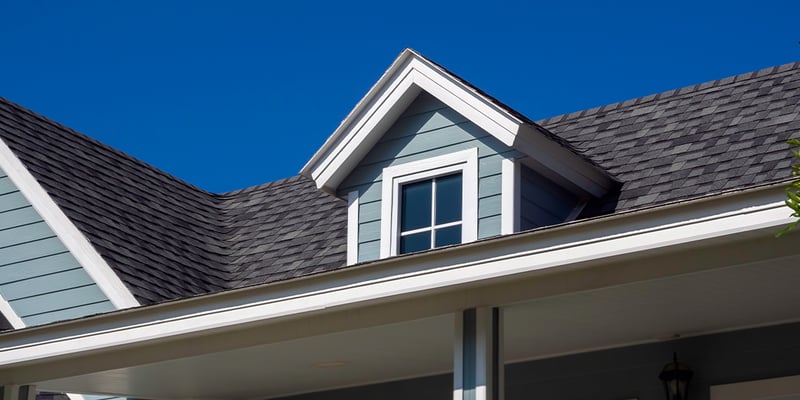
If it’s time for you to get a new roof and you’re considering selling your home sometime in the near future, you might be wondering whether roofing can boost your curb appeal.
According to Consumer Reports, adding curb appeal to your home can increase its value by 3%-5%. Beyond that, some studies have found that new roofs provide a 109% return on investment in terms of your home’s appraisal value.
Not all materials are created equal when it comes to adding curb appeal via a new roof. Of course, a brand new, properly installed roof is going to be a selling point when you put your house on the market, no matter the type of roofing system. However, some types of roofs really add to the visual appeal of your home from the street, which can help create a positive first impression in the eyes of prospective buyers.
If you’re interested in increasing your curb appeal while upgrading your roof, which roof type should you look at? Let’s take a closer look at the best types of roofs for boosting curb appeal.
What Is Curb Appeal?
Curb appeal is a term that describes how attractive a property is from the street or sidewalk. Essentially, it refers to how appealing a home is to prospective buyers when passing by. Real estate agents use the term “curb appeal” to stress the importance of making a good first impression when selling a home, particularly because there are a number of cost-effective ways to make a house look more attractive to buyers in terms of curb appeal.

When buying a home, you might wonder why it would matter whether a home has a new mailbox or well-curated plants on the front porch. After all, purchasing a property is the biggest financial decision many Americans will make in their entire lives– wouldn’t other factors like the condition of the roof and energy-efficient appliances be much more important?
More practical considerations are, of course, also an essential part of the decision-making process for home buyers. At the same time, though, it’s important to recognize that buying a home is also an emotional decision, not just a financial decision. The first impression that a person receives of a home can have an enormous impact on whether or not they ultimately decide to make an offer on your house. Since you only get one chance to make a good first impression, investing in curb appeal can be worthwhile when you want to sell your home as quickly as possible for the highest price possible (and, frankly, who doesn’t?)
Can a Roof Enhance Curb Appeal?
Some methods of boosting curb appeal are cost-effective and simple– sprucing up the landscaping, repainting the front door, and adding new house numbers are good examples. Replacing your roof, on the other hand, is more of an investment than these quick and easy curb appeal improvement methods.
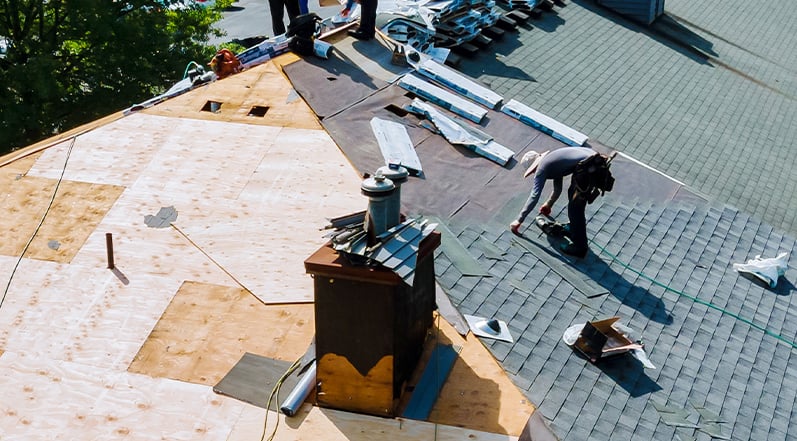
If it’s about time to think about getting a new roof, though, and you’re even contemplating selling your home in the near future, it’s worth noting that your roof can certainly impact your home’s curb appeal. Your roof is visible from the street, and a new roof can improve the overall aesthetic value of your home and even add value to your home.
The point is that you wouldn’t necessarily want to replace your roof just for curb appeal. However, it’s worth taking this into account when it’s time for a new roof, as the type of roof you choose can end up having a meaningful impact on your home’s curb appeal and value.
What Roof Type Is Best For Boosting Curb Appeal?
So, we’ve established that a new roof can help boost your home’s curb appeal. If the existing roof on your home is a traditional 3-tab shingle roof, the new standard architectural asphalt shingles will almost certainly improve the aesthetic appearance of your home and boost your curb appeal. That being said, there are some materials you can choose that can elevate your property to a whole new level, the most notable of which we’ll take a look at in this section.
Luxury Asphalt Shingle Roof
Pretty much anywhere you go in the U.S., you’re going to notice asphalt shingles on a lot of houses. This is the most common roofing type on residential homes because it is a cost-effective solution that is appropriate for many different climate types.
However, you can kick things up a notch by investing in luxury asphalt shingles, which are designed to look like slate tiles, a historic and long-lasting roofing system that gives a timeless look to a home.
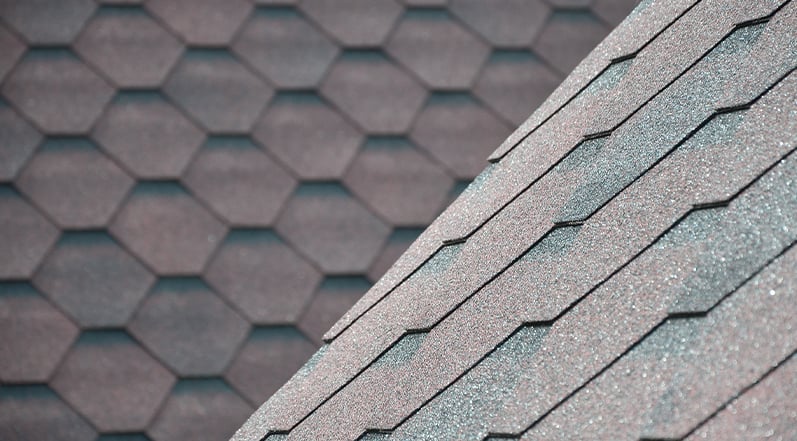
Luxury asphalt shingles not only improve your home’s visual appearance but are also larger and thicker than other types of asphalt shingles. This makes them a more durable roofing solution for your home, which typically comes at about twice the cost of standard architectural or laminated shingles.
If you’re wondering whether architectural roofing shingles are worth the additional cost over traditional 3-tab shingles, make sure you take a look at our comparison of 3-tab and architectural shingles.
Composite Shingle Roof
Also known as synthetic roofing shingles, composite roofing shingles are designed to look like either cedar shake shingles or slate shingles.
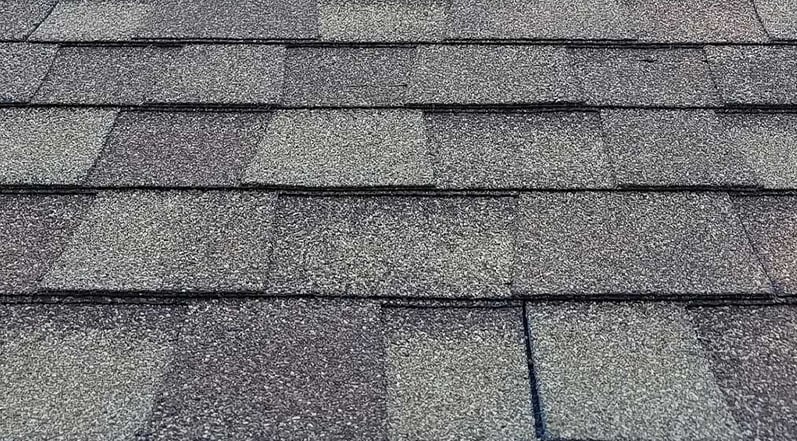
The shingles modeled after natural cedar shakes have deep grooves and realistic grain patterns to mimic the appearance of a real wood roof. The slate-inspired shingles were designed to look just like real slate, even with chisel marks to help add the appearance of hand-crafted roofing material.
Slate Roof
For centuries, slate roofs have been a major signifier of craftsmanship and quality. With the right materials, proper installation, and a little maintenance, these roofs can last for 50 to 200 years.
It’s known that slate has been used for roofing structures for thousands of years, but for a long time, it was only used for the most important buildings, such as military forts, churches, and palaces. For most of its history, slate could only be afforded by the wealthiest individuals and institutions in society.
The high price of slate was due to the dangerous, arduous process of quarrying and transporting slate. As quarrying and transportation technology advanced and the process of extracting slate became less time-consuming, the material became more available and cost-effective for regular people. This led to the slate boom in the 19th century.
By the early 20th century, demand for slate began to decline due to the impact on the industry of the two World Wars as well as the rise of synthetic alternatives that were much cheaper to produce.
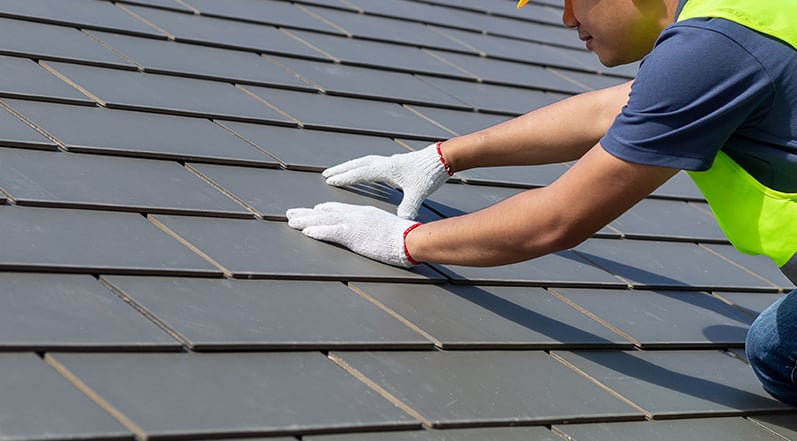
Many decades later, however, people are starting to rediscover the truly impressive potential of slate roofing when it comes to effectiveness, durability, and longevity. On top of that, it is hard to beat a slate roof when it comes to curb appeal.
It’s worth noting that for all of the benefits of slate, there are some very important drawbacks to take into consideration. Not only is it one of the most expensive types of roofs to install, but many newer construction homes aren’t built or framed to carry the weight of heavy slate tiles. If you love the look of slate but aren’t excited about spending at least four times more than you would for asphalt shingles, a luxury architectural shingle could be a good compromise.
Cedar Shake Roof
Another beautiful, natural, and historical type of roofing system, cedar shake roofs run up against slate roofs for the most aesthetically appealing roofing material types.
Made from cedar trees, these shingles are hand split or tapersawn, offering a more rugged look and creating a smoother visual appearance.
Wooden shingle roofs were very common in Colonial America because wood was a prevalent material, and the shingles were lightweight, easily installed, and easy to be made using simple tools. During the same period, European roofs were more likely to be made using slate, tile, or thatch.
In the 19th century, wood shakes emerged as the primary roofing material for many homes and public buildings in the United States. The type of wood used to create these shakes and shingles depended on the location, with oak and cyprus being more common in the South, for example, and redwood and cedar more popular out West.
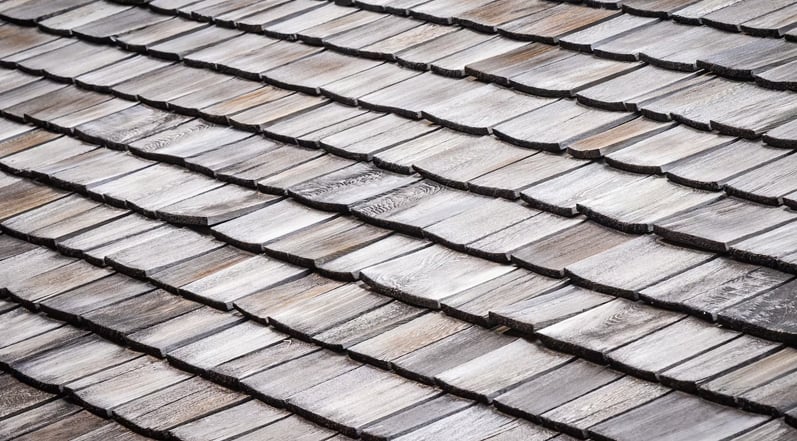
Cedar shakes aren’t just aesthetically beautiful but are also long-lasting, durable, and energy efficient due to their natural insulative features. On the other hand, these can be fairly high-maintenance roofs that require regular maintenance to ensure that mold, mildew, and moss aren’t allowed to grow. These days, there are preservatives that can be added during manufacturing in order to preserve the wood and prevent fungal growth.
Since cedar shake roofs are premium roofing systems, you might not be surprised to learn that they come at a premium price. Compared to a dimensional asphalt roofing system, the total cost of a cedar roof can end up being more than five times the cost of asphalt shingles.
Synthetic shakes tend to be more expensive upfront than natural cedar, but they have an even longer expected lifespan and require less maintenance over the roof’s life.
Metal Roof
Metal roofs have been getting more and more popular recently, and for good reason. When it comes to curb appeal, they can offer a clean, modern, sleek look to any property. There are also many different styles and colors available when it comes to metal roofing material, meaning that you can choose a material that best suits the look and feel of your home.
Gone are the days when metal roofs conjure images of rusty corrugated metal roofing from years of neglect. These days, you can choose metal roofs in galvanized steel, copper, aluminum, zinc, or tin, and choose among more than one hundred different colors. Though standing seam metal roofs are the most popular, you can even purchase metal shingles that are specifically designed to mimic the look of clay tiles, slate roofs, or cedar wood shakes.
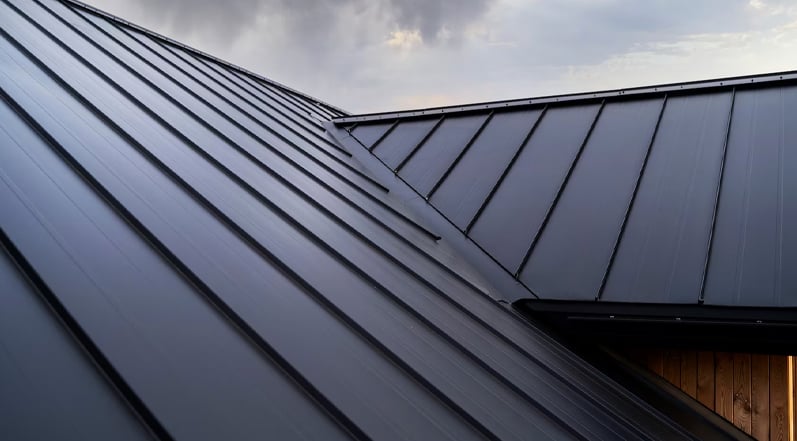
A part of the curb appeal of metal roofs is that people are increasingly aware of the fact that they are long-lasting, durable, and energy-efficient roofing systems. A metal roof that has been properly installed can last 40-70 years or more, which can be compared to traditional asphalt shingles, usually lasting from 12 to 20 years.
The reflective nature of metal also makes them an energy-efficient choice for a home, meaning that you’ll use less energy to cool your home in the summer and put less wear and tear on your cooling system.
Of course, all of the benefits of metal roofs come at an increased cost. There is a wide range of prices for metal roofs depending on the quality and type of roofing, with higher-end metal roofing costing as much as ten times more than asphalt shingles. Installing metal roofs is also more expensive because it requires specialized tools, knowledge, training, and equipment to properly install them. If you have the budget to invest in a roof that will likely be the last one you’ll ever need, it can be well worth the cost.
Are You Ready to Boost the Curb Appeal of Your Home?
Replacing a perfectly functional, fairly new roof simply to increase your home’s curb appeal likely isn’t worth the cost or the trouble. However, if you know you’re going to need to replace your roof and you want to keep curb appeal in mind, choosing one of the above roofing materials can be a great way to make your home really shine, add value, and increase the speed at which your house sells if you do put it on the market.
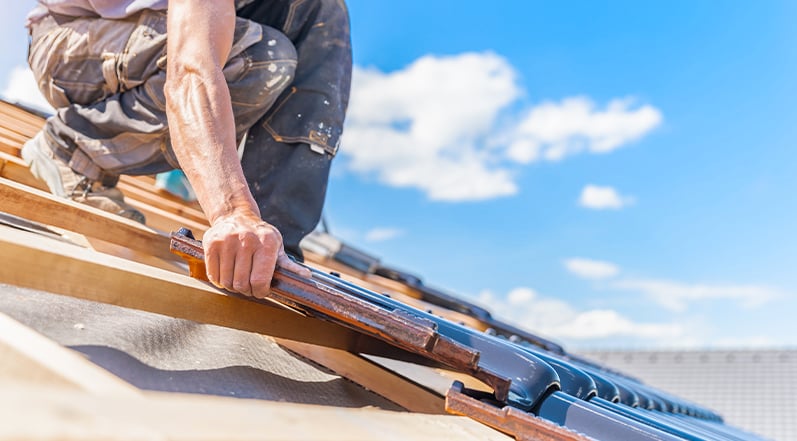
There are two essential factors that go into the success of any new roofing system: the materials you choose and the quality of the installation. No matter how high-quality your materials are, they won’t be able to perform their best if poorly installed. For that reason, Colony Roofers should always be your go-to roofing company in the greater Atlanta area.
At Colony Roofers, our entire team has been hand-selected for their integrity, work ethic, and experience. We pride ourselves in providing the absolute best customer service and specialize in offering the highest quality roofs for the most affordable prices.
When it’s time to replace your roof, we’re here to help. To schedule a free estimate, contact us today!
 Call (678) 365-3138
Call (678) 365-3138



